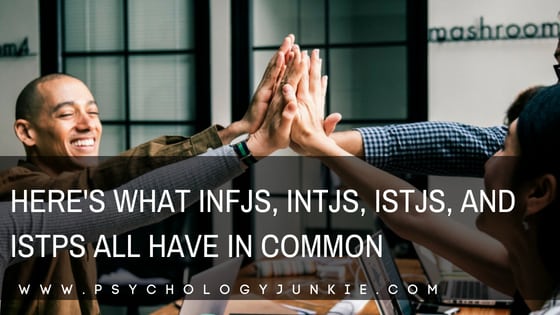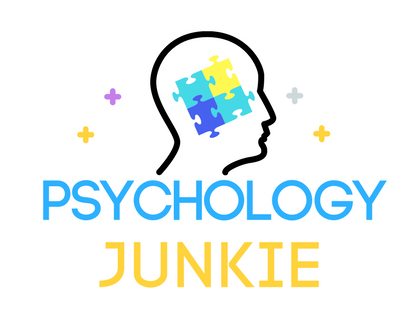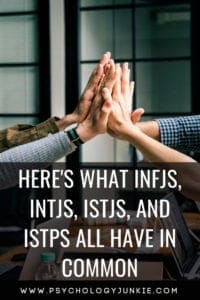Here’s What INFJs, INTJs, ISTJs, and ISTPs All Have in Common
At first glance you’d think that INFJs, INTJs, ISTJs and ISTPs would have very little in common. I mean, they’re all introverts, but aside from that you have one feeler thrown in with a bunch of thinkers and one perceiver mixed up with a bunch of judging types. What’s the rhyme or reason to this grouping? What common features do they share?
According to the work of Linda Berens, a psychologist and founder of the Temperament Research Institute, these four types all have a unique interaction style. This style is called “Charting the Course™”.

But what does it mean to chart the course? And why do these four types do this?
According to Berens, we have an inborn interaction style that remains constant throughout our lives. She, along with other psychologists and typologists, have tracked the courses of many individuals throughout their lifetimes to determine the validity of interaction styles and type itself.
Chart the course™ individuals are the consummate planners. They take their time to carefully and diligently foresee what is likely to happen and create one or several workable plans to ensure the best outcome.
Chart the course™ individuals are good at foreseeing how people will respond to things, conceptualizing their desired vision or goal, and making deliberate, strategic decisions to achieve that goal.
What other interaction styles are there?
Along with the “Chart the Course™” style, there is also the “Behind the Scenes™” style, the “In-Charge™” style, and the “Get-Things-Going™” interaction style. Each style has unique giftings in communication and productivity. Each style likes to be spoken to in a different way and has a different manner of working with people.
So Why These Particular Personality Types?
Let’s start by taking a look at INFJs and INTJs…
INFJs and INTJs are driven by a mental process called Introverted Intuition (Ni). As such, they are extremely focused on envisioning future outcomes and implications. This literally is what gets them excited and puts them into a mental “flow” state. They live to anticipate the future. INFJs in particular are gifted at empathy and understanding how people will likely react to things. INTJs are good at mapping out logical systems and plans of action. Both these types excel at using their unique skills to strategize plans that will achieve far-reaching future goals. In fact, according to depth typologists Leona Haas and Mark Hunziker, Introverted Intuition is “the vision that guides strategic planning.
Next, let’s talk about ISTJs…
ISTJs like having a practical plan of action. They use a mental process called Introverted Sensing (Si) to keep track of concrete details and experiences. Using these carefully-scrutinized details, they will come up with exhaustive, sequential plans that are more linear and concrete than the INTJ/INFJ style. They put a lot of patience and time into making sure every detail of their plan is correct and effective. They are skilled in the art of logistics and are good at foreseeing potential security risks and loopholes. They have a calm, confident demeanor that gives assurance to people on their team.
Lastly, let’s talk about ISTPs…
ISTPs are more tactical in their approach to planning because of their Extraverted Sensing mental process. They are the people you call in a crisis who can quickly size up the situation, analyze upcoming scenarios, and take hands-on action right away. They are good at using tools and resources to get the desired result and they avoid theorizing (or panicking) in urgent situations. They move faster than the other Chart the Course™ personality types to get a more immediate result.
How Can You Identify A “Chart the Course™” Personality Type?
Each of these types will have an urgent need to anticipate what will happen next. They all like space and time and need to be unhurried and independent to be satisfied. A lot of commotion and socializing gets in the way of their process.
All of these types believe that thinking ahead is important. They don’t just jump right into things (unless they have to) without having analyzed the possible implications and effects. They are always mapping things out quietly, saying “if this, then that”, or “let’s look at the long-game”.
INFJs, INTJs, ISTPs, and ISTJs all appear quiet and more reserved. They like to have personal space. They also tend to appear intense and focused. In fact, they can become so focused that they might miss seeing extraneous details or people that are in the environment. This is a little less true of ISTPs who are usually highly attentive to details in their environment.
Chart the Course™ individuals believe in self-control and self-restraint. Because every action has a long-term implication they are careful and and intentional about the actions they take. They don’t readily divulge a lot of personal details and, while often friendly, they have a certain directness and drive about them.
INFJs will usually seem a little more warm and personable than the other types, due to their feeling preference. INTJs will look at life like a game of chess. ISTJs will be more practical, grounded, and focused on concrete, linear plans. ISTPs will be more adaptable and quick to act.
When you get a team of people with these skills working together real magic can happen.
The INFJ plans and foresees the human implications of the plan and strategizes how to meet goals while keeping people’s needs met.
The INTJ uses strategic planning to focus on long-range goals. They are visionary, innovative, and don’t mind directing and leading.
The ISTJ looks over the plan to ensure no details are missing and no security is at stake. They are good at carefully outlining things, inspecting progress, and making sure there aren’t any loose ends.
The ISTP is the clever analyzer who will look at the current situation, size it up rapidly, and use any resources available to make sure immediate goals are achieved and nobody panics in the midst of a crisis.
And just for fun, if you’re a Marvel fan, I’ll give you an idea of what a chart-the-course™ planning committee would look like.
You’d have Jean Grey (INFJ), Wolverine (ISTP), Dr. Strange (INTJ), and Okoye (ISTJ) all working together. You can imagine what an unstoppable team they would be!
I’ll be writing more about interaction styles in the future, but if you’d like to find out more on your own be sure to check out Understanding Yourself and Others© An Introduction to Interaction Styles. (This is an affiliate link).
What Are Your Thoughts?
Be sure to share your thoughts and ideas in the comments!
Other Articles You Might Enjoy:
Here’s What Your Core Values Are, Based On Your Personality Type
Here’s How You Like to Learn, Based On Your Personality Type
Here’s the Science Behind Your Myers-Briggs® Personality Type









I am a INTJ, this is new to me. But it is helping me to understand me, why I was not very social & wanted to be along most of the time. When i was first married we would go camping with our friends. I like my friends but i just didn’t want to do what they were doing. I wanted to stay in my camper & read or walk on the beach. My husband wanted to be with our friends. I am friendly & like talking one on one, but I don’t like being in a crowd. I don’t like a lot of attention from a group of people. If one person was giving me attention, that is fine. I like doing things by myself. When I was working, I like filing, organizing things. I’m always thinking, over thinking some times. Like figuring out things. Many yrs have passed now & I am divorced. I get stressed real easy now & want to be by myself for sure now. I like staying home. I realize that I am an introvert & that is fine.
More realistic and less sympathetic examples. All have plan.
.John Kramer, INTJ
.Dexter, ISTJ
.The Jackal, ISTP